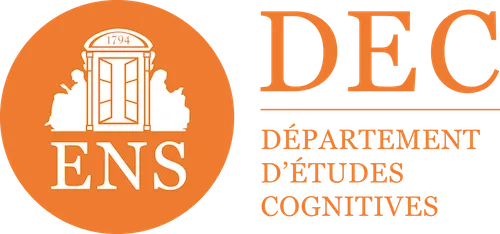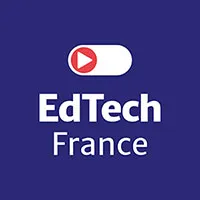

How do you use AI to become a learning organization?
The concept of a learning organization, popularized in particular by Peter Senge in his book the 5th discipline, is constantly attracting businesses, and it is easy to understand why.
In theory, everyone can agree that businesses should operate more in a process of continuous improvement, investing not only in training, but also in initiatives to document and share best practices. In daily reality, however, it is more than difficult to find the time and effort to set up such dynamics, especially in a context of short-term performance pressure.
Therefore, two questions arise:
- First, is it really worth the effort?
- Second, can we reduce the cost of transformation, and ensure that utopia finally becomes a reality?
In this article, we will see that while the transition to a learning company is indeed an absolute necessity, it faces the bottleneck of sharing expert knowledge. And that, precisely, AI offers a historic opportunity to solve this problem, provided that we properly measure the educational dimension suitable for sharing knowledge.
The learning company, a productivity imperative
For managers, training is often seen as a cost center.
Each hour must be justified: an hour to develop skills, or simply to take a step back from his practices, is also an hour when a salesman does not make a telephone call, where a worker does not manipulate his machine. As a result, training activities are sacrificed, or relegated outside of office hours.
This situation is all the more paradoxical when we observe the loss of productivity linked to the lack of transmission of knowledge in the company. For example, it takes an average of 6 months for a new hire to become fully operational in this position; including once operational, workers pass on average 2.5 hours per day to look for the information they need to do their job. This considerable time represents a loss of gain, which is not hypothetical but very real. However, this time is precisely what a concerted effort to make the company more learning could reduce!
The whole issue is therefore that of ROI (return on investment) : invest the time necessary for transmission and the development of skills on a daily basis as an input, to further reduce the time lost in searching for information and navigating by sight at the exit.

The bottleneck: turning experts into pedagogues
How can we guarantee such an ROI (return on investment)? Let's start by identifying where the opportunities are. Obviously, the biggest opportunity is internal: it is the knowledge embodied by business experts. This knowledge already exists now, an often specialized knowledge, which is also unique to the company: its tools, its customers, its processes etc. Simply, it is only rarely transferred; and when it is transferred, it is in a format that makes it difficult for any employee to appropriate it. As Lew Platt says,” If only HP (Hewlett Packard) knew what HP knows ” (If Only HP Knew What HP Knows )! Unfortunately, transmission faults are often only discovered at critical moments, for example when leaving the company.
The transmission defect can be explained mainly for two reasons.
- First of all, experts are running out of time to devote to the transmission of knowledge - the pressure to perform mentioned above encourages them instead to focus on their daily tasks, in order to maximize their impact.
- Then, even when they have time, experts most often lack teaching skills to transmit effectively.
This lack is due in particular to cognitive factors: because they have automated a certain number of tasks in their brain, experts are no longer able to trace all the micro-steps through which a novice person must go through in order to take ownership of their words (see in particular the work of the educational psychologist Paul Kirschner on this subject). We have all experienced a situation where an incredible technician tries to explain a concept or procedure to us in obscure jargon, without realizing the chasm between his understanding and ours. Of course, this is not about blaming the experts — not only is pedagogy a profession, but also, as they will rightly tell you, “we don't get paid for it”! So how do we do it?
The contribution of educational AI
This is where AI can help the most - provided, however, you are equipped with a AI specialized in pedagogy, which masters the steps necessary for the appropriation of knowledge, rather than settling for a generalist AI, which risks reproducing the pitfalls of top-down, abstract and overloaded presentations.
Indeed, without real appropriation of knowledge by employees, no lasting gain in productivity is possible. It's not so much about responding quickly to questions from the field (“how can I respond to this customer objection? ”) only to go back to the source of these questions to avoid the need to ask them again tomorrow; in other words, Knowledge does not have to be in a machine, but in the brain of those who are going to use it.
However, innumerable parameters predict the appropriation or not of knowledge — intrinsic motivation, cognitive overload, pre-existing knowledge, Illusion of mastery — and entire bodies of empirical research in cognitive science give us the keys to apply these parameters to a wide variety of concrete cases, from onboarding to product knowledge through relational matters. In the absence of specialized technological overlay, A generalist AI is currently unable to take into account all of these elements and to adapt them to the knowledge of a company.
Fortunately, next-generation tools, which can be called “educational AIs”, are beginning to emerge in the world of learning and knowledge management. These assistants start by asking experts to transcribe the knowledge into a raw form, without any particular effort on their part: a PowerPoint, a PDF, a paragraph of text, or even an audio where they describe a process in their own words, without having to act as a pedagogical engineer.
These tools can then transcribe knowledge into various formats that optimize their cognitive appropriation by the employee. In some cases, it may be a basic conversation in which the employee can get an answer to his question in real time (“what is the procedure”); pedagogy intervenes at this stage by reformulating the answer according to the context of the learner, adding here a concrete and telling example, here a case solved step by step. In other cases, this can go as far as the establishment of authentic training experiences: interactive microlearning with exercises by situation, anchor flashcards, even real-time simulation activities... These types of pedagogically rich formats were previously reserved for experts in training engineering: now, Educational AI automates most of the work.
Of course, tools aren't everything. To really set up a learning company, it is imperative to also think about setting up regular rituals to facilitate sharing by experts: this can take the form of lunches, daily challenges, “learning fridays”, or even co-development sessions, which feed the company with expert content. Where previously, capitalization took the form of notes (which we only too rarely knew what they would become), now, content can be encapsulated in educational AI. This content thus becomes not only sustainable, but also, above all, transferable and adaptable according to the situation. They are also evolving: the expert will thus be able to say “we no longer offer this discount” and the knowledge will automatically be updated.
Discover the exceptional results achieved by our educational AI for Center for the Training of the Accounting Profession, as well as for the Pellenc agro-industrial group.
As you will have understood, the main technological obstacle to the learning enterprise has now been removed; the announced upheavals are not in the horizon of five or ten years, but are taking place right now.
In the world of educational AI, there is no need to choose between daily efficiency and the transfer of know-how: so, faced with such potential for productivity gains, why deprive yourself?
Make an appointment directly with our eLearning experts for a demo or simply more information.












